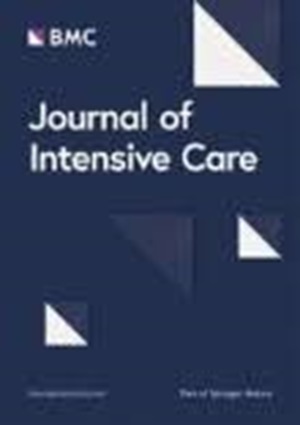呼吸驱动:从健康到疾病的旅程
IF 4.7
2区 医学
Q1 CRITICAL CARE MEDICINE
引用次数: 0
摘要
呼吸驱动力是指呼吸过程中呼吸中枢输出的强度,主要受大脑皮层和化学反馈机制的影响。在非自主呼吸过程中,主要通过二氧化碳介导的化学反馈是呼吸驱动力的主要决定因素。呼吸驱动力通过神经通路到达呼吸肌,呼吸肌执行呼吸过程并产生吸气流量(吸气流量产生通路)。在健康状态下,吸气流量产生途径是完好的,因此呼吸驱动力由体积增加率来满足,体积增加率由平均吸气流量来表示,而平均吸气流量又决定了潮气量。在本综述中,我们将通过分析呼吸中枢对动脉二氧化碳分压(PaCO2)变化的反应来解释呼吸驱动力改变的病理生理学。呼吸驱动力过高和过低都与危重病人的多种不良反应有关。因此,了解是什么改变了呼吸驱动力至关重要。呼吸驱动力的变化可通过同时考虑以下因素来解释:(1)呼吸中枢活动对二氧化碳的通气需求(脑曲线);(2)对二氧化碳的实际通气反应(通气曲线);以及(3)代谢双曲线。危重病人的大脑和通气曲线以及代谢双曲线会受到多种机制的影响,从而导致呼吸驱动力发生巨大变化。危重病人的吸气流量生成途径总会受到不同程度的影响。因此,平均吸气流量和潮气量与呼吸驱动力不一致,在给定的 PaCO2 条件下,实际通气量小于通气需求量,从而导致脑部曲线与通气曲线之间出现分离。由于代谢双曲线是决定 PaCO2 的两个变量之一(另一个是通气曲线),其向上或向下移动会分别增加或减少呼吸驱动力。机械通气通过改变通气曲线和代谢双曲线的各种参数来调节 PaCO2 水平,从而间接影响呼吸驱动力。了解床旁调节呼吸驱动力的各种因素可加强临床评估以及对患者和呼吸机的管理。本文章由计算机程序翻译,如有差异,请以英文原文为准。
Respiratory drive: a journey from health to disease
Respiratory drive is defined as the intensity of respiratory centers output during the breath and is primarily affected by cortical and chemical feedback mechanisms. During the involuntary act of breathing, chemical feedback, primarily mediated through CO2, is the main determinant of respiratory drive. Respiratory drive travels through neural pathways to respiratory muscles, which execute the breathing process and generate inspiratory flow (inspiratory flow-generation pathway). In a healthy state, inspiratory flow-generation pathway is intact, and thus respiratory drive is satisfied by the rate of volume increase, expressed by mean inspiratory flow, which in turn determines tidal volume. In this review, we will explain the pathophysiology of altered respiratory drive by analyzing the respiratory centers response to arterial partial pressure of CO2 (PaCO2) changes. Both high and low respiratory drive have been associated with several adverse effects in critically ill patients. Hence, it is crucial to understand what alters the respiratory drive. Changes in respiratory drive can be explained by simultaneously considering the (1) ventilatory demands, as dictated by respiratory centers activity to CO2 (brain curve); (2) actual ventilatory response to CO2 (ventilation curve); and (3) metabolic hyperbola. During critical illness, multiple mechanisms affect the brain and ventilation curves, as well as metabolic hyperbola, leading to considerable alterations in respiratory drive. In critically ill patients the inspiratory flow-generation pathway is invariably compromised at various levels. Consequently, mean inspiratory flow and tidal volume do not correspond to respiratory drive, and at a given PaCO2, the actual ventilation is less than ventilatory demands, creating a dissociation between brain and ventilation curves. Since the metabolic hyperbola is one of the two variables that determine PaCO2 (the other being the ventilation curve), its upward or downward movements increase or decrease respiratory drive, respectively. Mechanical ventilation indirectly influences respiratory drive by modifying PaCO2 levels through alterations in various parameters of the ventilation curve and metabolic hyperbola. Understanding the diverse factors that modulate respiratory drive at the bedside could enhance clinical assessment and the management of both the patient and the ventilator.
求助全文
通过发布文献求助,成功后即可免费获取论文全文。
去求助
来源期刊

Journal of Intensive Care
Medicine-Critical Care and Intensive Care Medicine
CiteScore
11.90
自引率
1.40%
发文量
51
审稿时长
15 weeks
期刊介绍:
"Journal of Intensive Care" is an open access journal dedicated to the comprehensive coverage of intensive care medicine, providing a platform for the latest research and clinical insights in this critical field. The journal covers a wide range of topics, including intensive and critical care, trauma and surgical intensive care, pediatric intensive care, acute and emergency medicine, perioperative medicine, resuscitation, infection control, and organ dysfunction.
Recognizing the importance of cultural diversity in healthcare practices, "Journal of Intensive Care" also encourages submissions that explore and discuss the cultural aspects of intensive care, aiming to promote a more inclusive and culturally sensitive approach to patient care. By fostering a global exchange of knowledge and expertise, the journal contributes to the continuous improvement of intensive care practices worldwide.
 求助内容:
求助内容: 应助结果提醒方式:
应助结果提醒方式:


